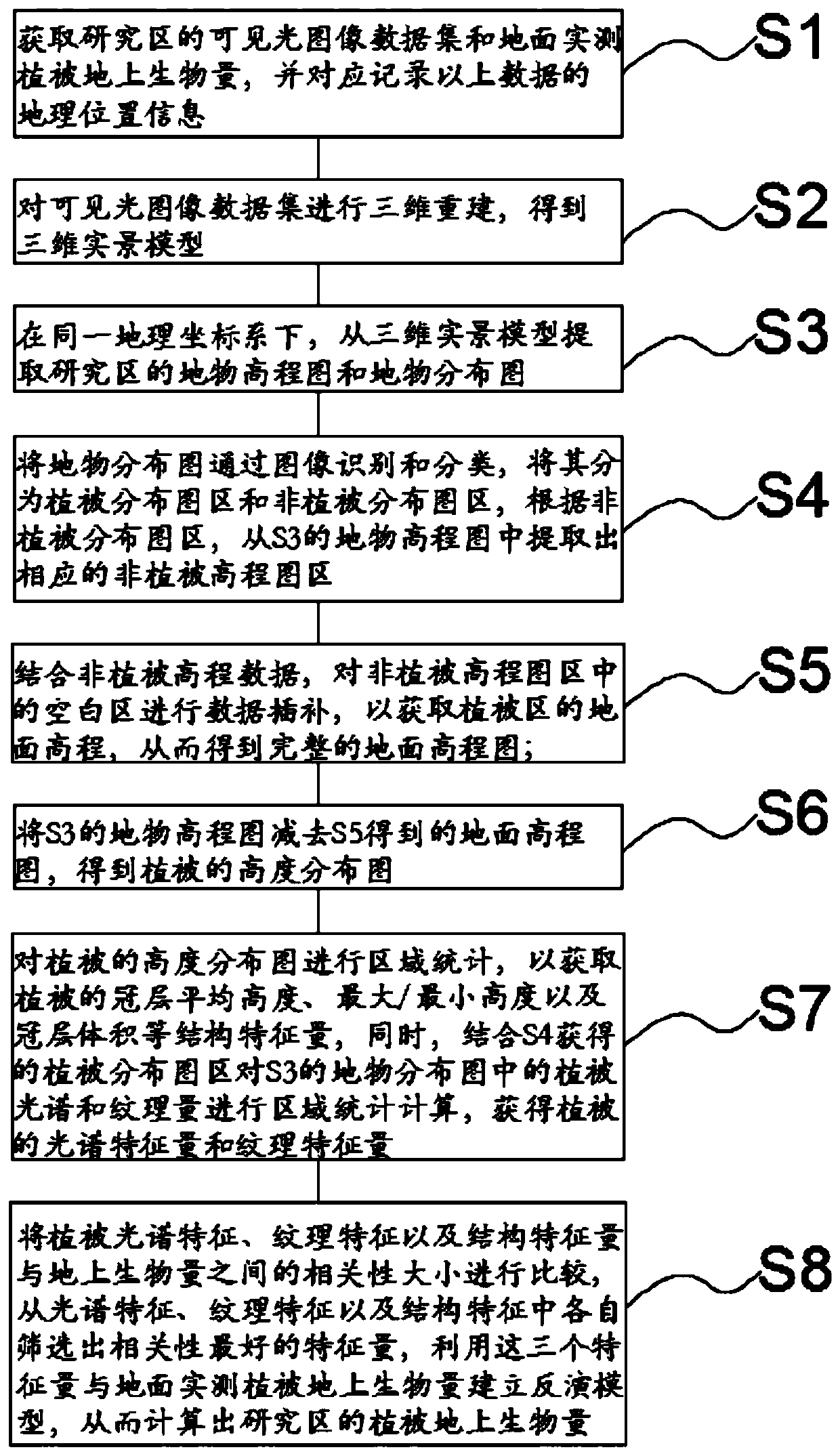Method for measuring and calculating overground biomass of plant
A biomass and vegetation technology, which is applied in the field of plant biomass measurement and calculation, can solve the problems of low estimation accuracy, time-consuming and laborious, and large spatial variability, and achieve high data reliability, wide application range, and high measurement accuracy. Effect
- Summary
- Abstract
- Description
- Claims
- Application Information
AI Technical Summary
Problems solved by technology
Method used
Image
Examples
Embodiment Construction
[0025] See figure 1 , the present invention also provides a kind of measuring method of aboveground biomass of plants, comprising the following steps:
[0026] S1: Obtain the visible light image data set and the aboveground biomass of vegetation measured on the ground in the study area, and record the geographic location information of the above data;
[0027] Further, in S1, the visible light image data set is obtained by a visible light sensor, and the visible light sensor is a visible light sensor of a drone or a visible light sensor of a mobile phone.
[0028] S2: Perform 3D reconstruction on the visible light image dataset to obtain a 3D real scene model;
[0029] Specifically, the process of building a three-dimensional real scene model from the visible light image data set is realized by photogrammetry.
[0030] S3: Under the same geographic coordinate system, extract the elevation map and distribution map of the ground features in the study area from the 3D real scen...
PUM
 Login to View More
Login to View More Abstract
Description
Claims
Application Information
 Login to View More
Login to View More - R&D
- Intellectual Property
- Life Sciences
- Materials
- Tech Scout
- Unparalleled Data Quality
- Higher Quality Content
- 60% Fewer Hallucinations
Browse by: Latest US Patents, China's latest patents, Technical Efficacy Thesaurus, Application Domain, Technology Topic, Popular Technical Reports.
© 2025 PatSnap. All rights reserved.Legal|Privacy policy|Modern Slavery Act Transparency Statement|Sitemap|About US| Contact US: help@patsnap.com

